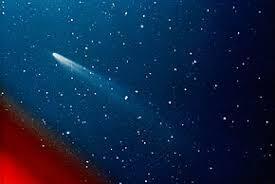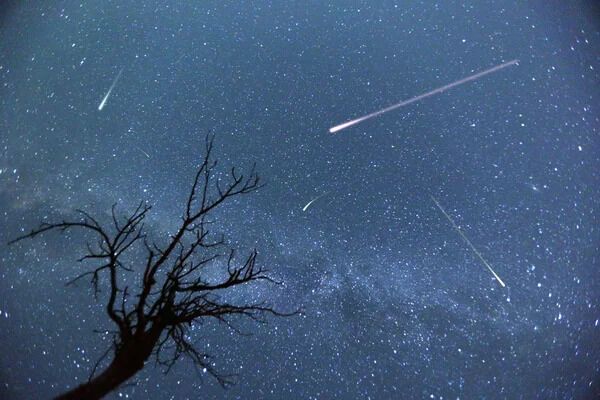News
A comet is hurtling toward Earth that will eclipse all the stars in the sky: when to expect a historic "visit"
C/2023 A3 (Tsuchinshan-ATLAS), a comet that can be seen with the naked eye, is heading toward our planet. The event is expected to occur in 18 months, at the end of 2025.
The "alien" is already being actively discussed in social networks and media. It turns out that the comet has every chance of exceeding the brightness of a star, Space magazine writes.
Every year, scientists discover several dozen new comets. Most of them are too faint to be seen with the naked eye.
However, sometimes there are exceptions.
Comet C/2023 A3 (Tsuchinshan-ATLAS) was discovered independently by astronomers from the Purple Mountain Observatory in China and the Asteroid Impactor Last Alert System (ATLAS). According to the researchers, the comet is now between the orbits of Jupiter and Saturn, a billion kilometers from Earth.
At the moment, it is about 60,000 times fainter than it takes to see it with the naked eye. But it is quite bright for an object so far away. Observations show that the comet is moving in the direction of the Sun, and soon it will be perfectly visible.
Components of the sensation
Astronomers who observe comets can predict in advance whether its brightness is likely to create a sensation. It all depends on a combination of the comet's path in the Solar System and the potential size of its nucleus, or solid center.
As comets approach the Sun, they heat up and their surface sublimates (turns from a solid to a gas). Erupting from the comet's surface, this gas carries dust with it, enveloping the nucleus in a so-called coma - a giant cloud of gas and dust. The coma is then pushed away from the Sun by the solar wind, resulting in the formation of a tail (or tails).
The closer a comet is to the Sun, the more active it is, and the hotter its surface is. Historically, the vast majority of the brightest and most spectacular comets have moved in orbits closer to the Sun than to the Earth.
The new comet has all the criteria to potentially surprise the viewer: a large nucleus and potential proximity to the Sun. In addition, it will travel almost directly between the Earth and the Sun, approaching us at a distance of 70 million kilometers in just two weeks after perihelion (the closest approach to the Sun). These are ideal conditions to see the space body with the naked eye.
Will the prediction work?
Predicting the behavior of newly discovered comets is a thankless task. Sometimes they do not meet expectations.
An example is Comet Kohoutek, discovered in 1973. Like Tsuchinshan's ATLAS, it was discovered unusually far from the Sun, moving toward our luminary. Astronomers promised the public the "comet of the century," predicting that it might become bright enough to be seen in broad daylight.
Comet Cometes did get brighter as it approached the Sun, but it happened too slowly. No one saw it during the day, as the comet's brightness did not exceed that of a star, and after perihelion it quickly faded away. It was a decent sight, but far from sensational.
It turns out that this was the first time Comet Cometescuetus had passed through the inner solar system. It had never come so close to the Sun, so its surface was rich in very volatile ice, which began to melt at a great distance. As it approached the Sun, these volatiles were exhausted, and the comet's final activity was less than expected.
There is a very real chance that Tsuchinshan-ATLAS, like Comet Kogoutek, will approach the inner solar system for the first time. If so, it may also be less spectacular than expected.
Where everything falls apart
But it could be even worse. Comets are prone to disasters. They are surprisingly often fragmented, disintegrated and destroyed. Particularly fragile are those that first enter the interior of the solar system.
A recent example of such fragmentation was comet C/2020 F8 (SWAN). When SWAN was discovered, it looked promising - it was supposed to become a naked-eye object in May 2020. However, as it approached the Sun, it suddenly became overly blinding, then blurred and began to disappear, disintegrating before our eyes.
On the other hand, fragmentation can be a good thing. For example, comet C/1975 V1 (West) was really impressive.
It came even closer to the Sun than Tsuchinshan-ATLAS, and was already shining when its nucleus split into four parts at perihelion. This fragmentation event released a huge amount of gas and dust, and the comet brightened noticeably, becoming visible even in broad daylight.
Comets are unpredictable phenomena, and can both surprise and disappoint us. No one can say what will happen to C/2023 A3 until people see it.
Only verified information is available on the OBOZ.UA Telegram channel and Viber. Do not fall for fakes.






























